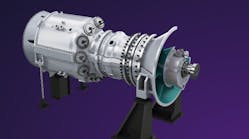The Marathon and the Sprint: Advancing the Road to Net Zero at two Deliberate Speeds
LOS ANGELES—The days crawl by but the years fly.
This old saying alludes to the stunning rapidity of life passing by even it seems to move slow, but it also fits for a moment that is not seized strongly enough to impact the future in a critical way. One such moment, which can be easily lost, is the opportunity to create a clean energy ecosystem for decades to come, if only we as a community of human beings could fully commit to the desired Net Zero path.
Shouldn’t be a problem these days, right? The Biden Administration pushed through passage of two sweeping pieces of legislation: The Infrastructure Investment and Jobs Act, as well as the Inflation Reduction Act creating access to more than $1 trillion in energy investment incentives and credits, and last year total global spending on clean energy accelerated to a record $1.1 trillion.
But all the money won’t another minute buy, to quote “Dust in the Wind.” More than 90 percent of companies with Net Zero commitments won’t make those goals by 2050 at their current paces, according to professional services giant Accenture.
At the recent Accenture International Utilities and Energy Conference in Los Angeles, this optimistic sense of present-day satisfaction and yet creeping fear of losing momentum was highlighted front and center by a host of high-level industry leaders who applauded progress made but warned of digression around the corner if leaders lose focus or give up hope.
“We find ourselves at a critical moment,” Scott Tinkler, Global Utilities lead and a Senior Managing Director at Accenture. “This past year proves we can move faster than ever in a compressed timeframe.”
The deployment of installed wind, solar and battery storage is growing at an all-time pace. Demonstration work into hydrogen and its carbon-free benefits for baseload power is yielding significant dividends and learnings that will guide upcoming projects, while even nuclear is gaining a rebound of sorts. Clean energy investment is finally achieving parity with fossil-fuel project spending.
And yet the treadmill is moving faster than the runner’s speed, with extreme weather outcomes getting worse and no future certainty of political support down the road, at least in the U.S.
Scott Drury, CEO of utility Southern California Gas, quoted both Clash punk rocker Joe Strummer and Mahatma Gandi, respectively, in saying “the future is unwritten” and “the future depends on what you do today.”
In other words, don’t take the energy transition progress so far for granted.
“The outcome is not preordained,” Drury noted. “If we approach it with innovation, collaboration and tenacity, we can make it.”
The pace of the energy transition is perhaps both exilerating and exhausting at the same time. Utilities and the commercial and industrial sectors desperately need to move faster, while also maintaining a steady pace of future investment, research and development in a myriad of decarbonization strategies, from renewables to efficiency to demand response.
“We must operate at two different speeds: the sprint and the marathon,” Tinkler pointed out.
“The sprint means embracing digital technology and moving in a compressed transformation,” he added. “Marathon speed is bringing order to chaos and making it an efficient, affordable transition. If we operate only at a sprint, we leave value on the table. If it’s only at marathon speed, we miss most of the key dates or targets.”
The United Nations estimates that reaching Net Zero carbon emissions by 2050 helps to limit global warming to only 1.5-degrees Celsius above pre-industrial levels. Even that seemingly harmless increase actually causes disastrious weather outcomes, rising sea levels and completely unknown other atmospheric reactions.
Beyond the visual allure of silicon-coated solar panels or lithium supply chains for battery storage, there is a less sparkly but certainly preeminent place for data analytics and control technologies. The balance between multiple energy resources and power resiliency lies in the digital transformation, the speakers at Accenture’s IUEC agreed.
“There is no energy transition without digital,” Ana Paula Marques, CEO of EDP Global Generation Platform and EDP Spain, said in a panel that included leaders from Xcel Energy, Enel North America and Accenture. “Digital is both an accelerator and enabler.”
Read more about the role of Digitalization and Energy Efficiency in the C&I Energy Transition
In a day which inspired quotations from notables as varied as a punk rocker, world renown peace activist and champions of “purpose-driven work,” Tinkler found voice in the words of fictional scientist and astronaut Mark Watney, played by Matt Damon in the popular film “The Martian.”
In the firm, Watney is stranded on the red planet to face almost certain death. However, he “sprints” to develop immediate life-saving strategies and concurrently forms a sustainable plan for long-term engagement that eventually reveals his survival to ground control on earth.
When Watney is rescued and returns home a hero, one of his students asks how he was able to hang in there and find the will to survive. “You just begin,” Watney says. “And if you solve enough problems, you get to come home.”
The destination for the energy industry is Net Zero. Anything short of that will be viewed by future generations as failure, but it must be deliberate, sustained and patient. It’s done as a sprint and marathon at the same time, making present successes as benchmarks and committing to long-term giant leaps forward while staying alert and adaptable to what the science reveals in the here and now.
“We put in the work, we do the math,” Tinkler said. “We solve one problem and then the next and then the next. Then we make Net Zero a reality.”





